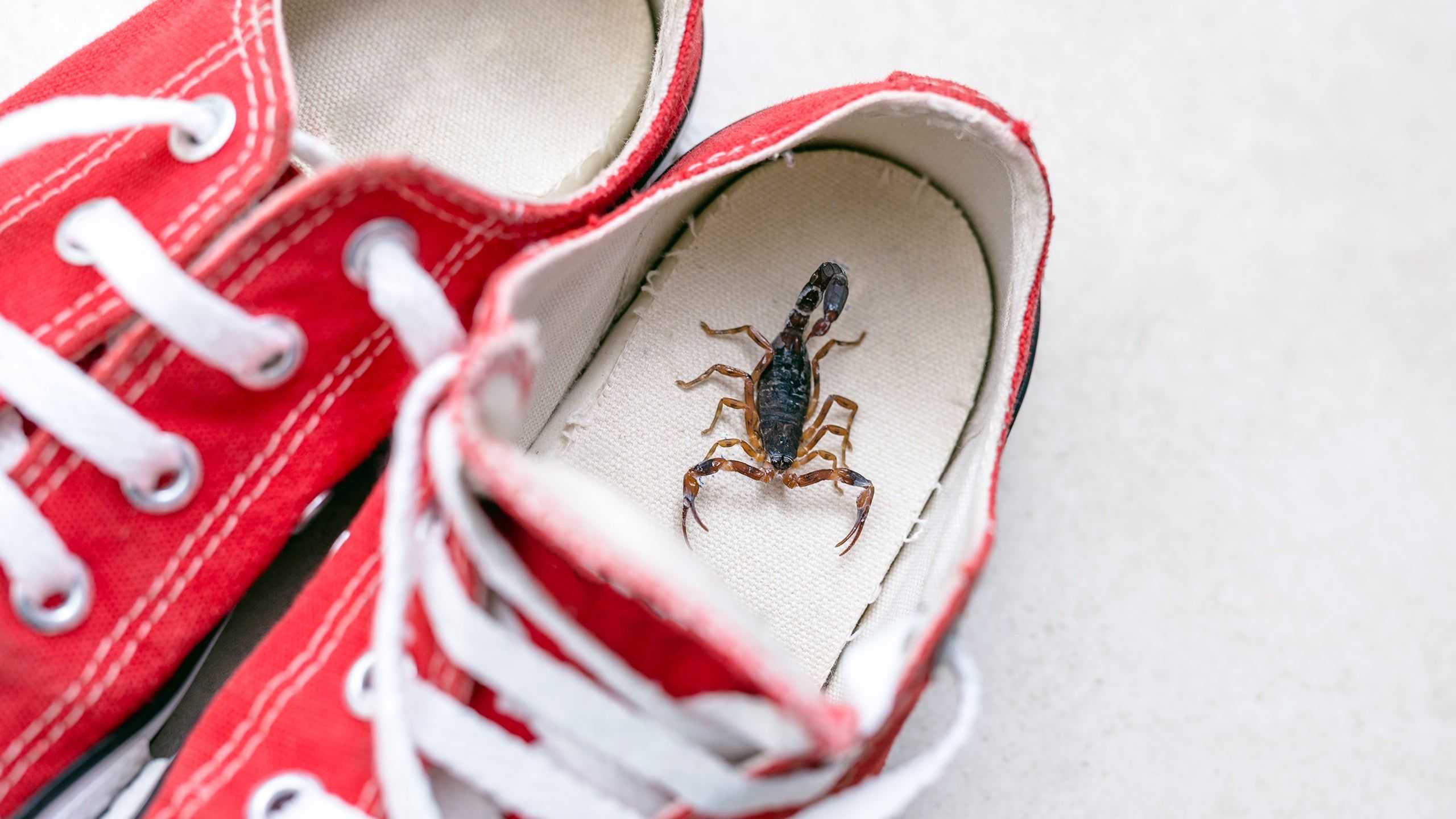
A Guide To The Common Pests Of Maricopa, Pinal, & Yuma County, Arizona
The pests that are most likely to cause problems in your building are the ones most common to our area of Yuma, Arizona. Fortunately, the home pest control and commercial pest control experts here at Bug Out Pest Control are ready to help! Learn everything that you need to know about the pest pressures in your Yuma, Arizona area home or business in our helpful resource guide, from what these common pests look like to the kind of problems that they’ll cause when they invade your home or business, and some helpful tips on how to get rid of them.
Bed Bugs
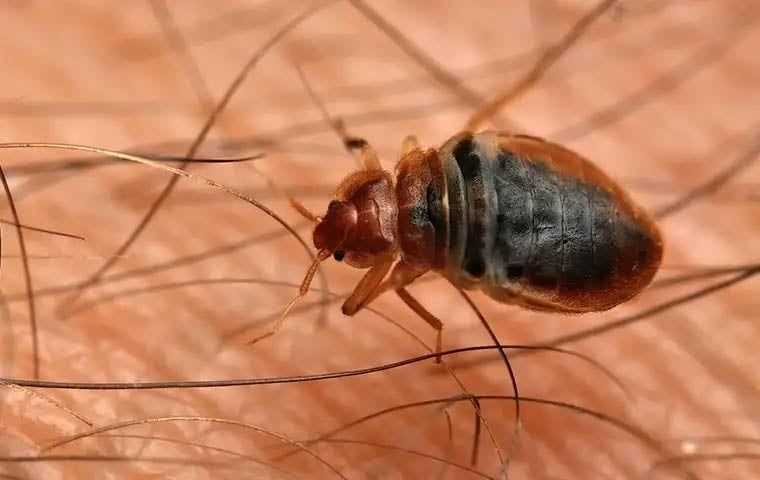
Bed bugs are parasitic insects that live in all states. Bed bugs look like apple seeds with legs. They are 1/4 of an inch long and have flat, oval-shaped bodies that are reddish-brown. These insects feed on the blood of mammals, and humans are their preferred host. Sometimes bed bugs don’t feed for months, preferring instead to wait for a human host; if humans aren’t available, however, these pests will feed on other mammal hosts such as cats, dogs, and rodents.
Bed bugs are wingless insects and therefore do not fly; instead, bed bugs travel to new locations by hitchhiking on people, their clothing, and their belongings. Some of the most common public places people come into contact with bed bugs include airports, hotels, laundry mats, movie theaters, schools, and shopping centers. When they do end up in your home or business, bed bugs usually first invade sleeping areas – hiding in the seams of mattresses, box springs, and cracks and crevices in wooden headboards and footboards. They move throughout the home as the infestation grows, hiding behind electrical outlets, in baseboards, wall hangings, wall voids, and inside electronics.
To prevent problems with bed bugs in your home or business, consider the following prevention tips:
- Always inspect your hotel room or other rental space before bringing luggage and personal belongings inside.
- Keep bags, coats, luggage, and other personal belongings up off the ground of public places.
- Do not purchase used box springs, mattresses, or furniture.
- While at work or school, it is very important to keep your personal belongings away from others.
- Place a protective cover that encases mattresses and box springs to reduce their access to hiding spots inside your home.
Cockroaches
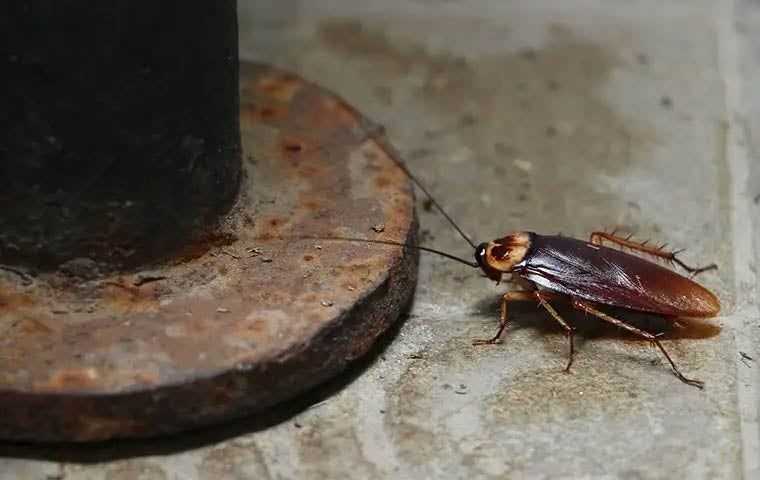
Cockroaches are primitive scavengers that feed on a variety of both food and non-food items. These insects have withstood the test of time and will thrive in almost any environment. Most cockroaches live near people and take advantage of the food, water, and shelter we offer. Cockroaches are social pests and live together in large groups. These insects breed quickly and invade multiple areas in your home or business, making them tricky pests to control. Preventing problems with cockroaches is essential because they contaminate both food and surfaces with bacteria, human pathogens, and parasites that they carry on their bodies and legs. Their shed skins and excrement trigger allergic reactions and asthma attacks, especially in children, and they also damage fabrics and paper items by chewing on them and staining them with their excrement.
Cockroaches are medium in size and have oval-shaped bodies with long antennae and six legs covered in spines. Depending on their exact species, they may or may not have fully developed wings. Nymphs (young cockroaches) look like adults, but are smaller and don't have wings. Two of the most common species living in our area are the American cockroach and German cockroach. American cockroaches prefer to live outside but sometimes move indoors to forage for food or escape harsh weather. American cockroaches are the largest species of property-invading cockroaches in the United States. The German cockroach prefers to live indoors and is a pest inside homes, grocery stores, restaurants, and food storage facilities. Cockroaches find their way inside homes or other structures on their own or are accidentally introduced in bags, packages, potted plants, or inside used appliances or furniture.
To prevent problems with cockroaches in your home or business, consider the following prevention tips:
- Keep cockroaches out of your home or business by inspecting its exterior and sealing any spaces that lead inside.
- Fix clogged gutters and leaky outdoor fixtures, repair leaky pipes inside your home.
- Keep outdoor lights off when not needed, as they attract cockroaches.
- Get rid of the food and water sources that attract cockroaches.
- Store all food inside the refrigerator or containers with airtight lids.
- Inspect potted plants for roaches and other insects before bringing them inside.
- Eliminate crumbs and spills by vacuuming floors and wiping down counters and table surfaces daily.
- Keep locking lids on trashcans and compost bins, storing them up off the ground and away from the exterior of your property.
Pigeons
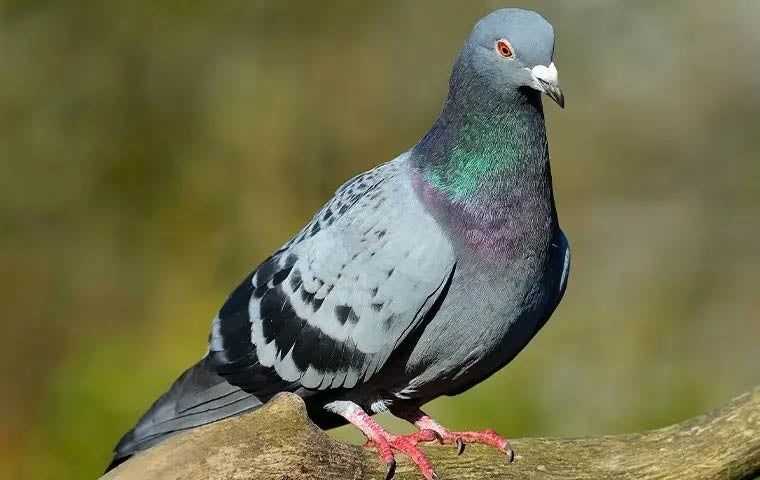
Living throughout urban and rural regions, the pigeon is a common species of pest bird. Pigeons have a distinct appearance that makes them easy to identify: most of these birds have plump bodies that are light gray, and their heads, shoulders, and breasts are dark gray. Depending on the species, some pigeons have rust or metallic-colored feathers crossing their breasts, necks, and heads. Adults have two dark bars crossing their wings and another crossing their tail. Pigeons grow to between 11 and 15 inches in length and are easy to spot.
Pigeons prefer to feed on seeds and grains, but are scavengers and will eat almost anything. Open bird feeders, trash containers, and compost piles all provide pigeons with easy access to food. Once there is food on your property, they will stay and create nests to roost above ground. Common nesting spots include attics, barns, chimneys, roofs, under bridges, and in warehouses. They are also a problem in parks and playgrounds where food is abundant. Preventing issues with pigeons is crucial because they spread a variety of diseases through their feces including salmonella and toxoplasmosis. There is also a type of fungus that grows in their waste that causes histoplasmosis. Another big issue with pigeons is that their feces will accumulate on the ground under their roosting and nesting sites which, along with being unsightly, creates a slip hazard.
To prevent problems with pigeons in your home or business, consider the following prevention tips:
- Keep locking lids on outdoor trash cans and compost bins.
- Remove all bird feeders from your property.
- Keep outdoor eating areas free of food debris.
- Remove as many sources of food as possible to avoid attracting pigeons to your property.
Scorpions
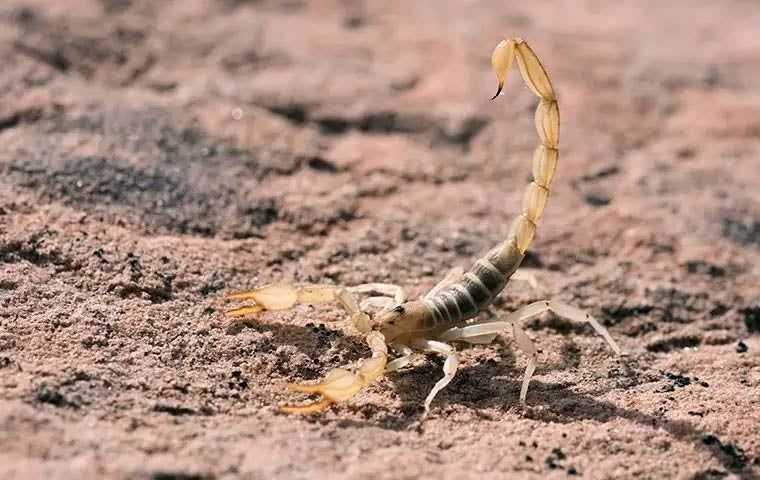
Scorpions are arachnids and have eight legs, as well as a pair of pincers and long, segmented tails that curve over their bodies; at the end of their tails is a bulbous segment with a stinger that they use to inject a potent venom into their prey after capturing it using their large, powerful pincers. Scorpions are nocturnal, emerging from their daytime hiding spots to hunt for insects, rodents, small lizards, spiders, or other scorpions. Scorpions have very poor eyesight but are still fierce hunters, using touch and vibrations to locate prey.
In our area, two of the most common species of scorpion are the bark scorpion and desert hairy scorpion. The bark scorpion is the only species in the United States that has venom strong enough to severely impact the health of a person. The desert hairy scorpion is the largest scorpion species living in North America. Although these scorpions deliver excruciating stings, their venom is not as potent as that of the bark scorpion. Knowing where scorpions hide is important so you can avoid them. Outdoors, scorpions are found in woodpiles, on trees, under rocks, and logs. Inside, they live in basements, crawlspaces, laundry rooms, and bathrooms – all places that provide a dark, humid environment.
To prevent problems with scorpions in your home or business, consider the following prevention tips:
- Create a barrier of rock or crushed stone between any mulch or soil and the foundation of your property.
- Remove fallen trees, piles of wood, and excess debris that scorpions can burrow under.
- Cut tree branches away from the exterior of your property.
- Inspect the exterior of your home or business and seal areas they can use as entry points.
- Reduce moisture levels by repairing leaky pipes, using dehumidifiers, and wiping excess water from sinks and tubs.
Spiders
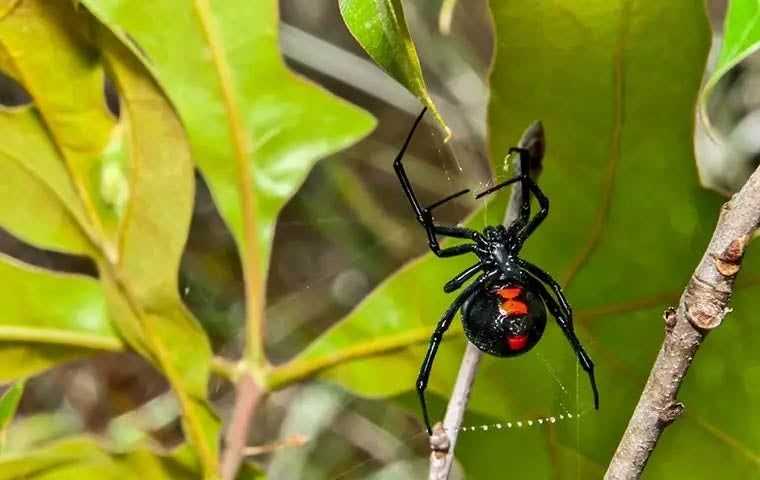
There are about 3,000 species of spiders living throughout the United States. Unlike insects that have three body parts and six legs, spiders are arachnids and have two body parts with eight legs. They lack wings and antennae but have chelicerae (fangs) that they use to inject venom into their prey. Spiders are beneficial pests because they feed on a variety of insects and other spiders, preventing nuisance and garden pest populations from exploding. Another interesting fact is that all spiders create silk, but not all spiders use it to build webs. This silk is very durable and used for many things including climbing, lining the walls of burrows, wrapping their prey, and building egg sacs.
Spiders live in a variety of secluded places like gardens, overgrown grass, wood or rock piles, or wooded areas. They prefer to live outside but sometimes move inside homes or other buildings to follow their prey inside or to escape harsh weather. While they don’t make good houseguests, the good news is that most of the spiders we come into contact with are harmless as their venom is not strong enough to cause health problems in people. However, there are a couple of exceptions to this rule – an example of which is the black widow spider. Black widow spiders have shiny, black bodies and a unique, reddish hourglass-shaped mark on the underside of their abdomens. Their venom attacks the nervous system of their victims. Symptoms of a black widow spider bite require immediate medical attention and include muscle aches, fever, nausea, stomach cramps, and breathing difficulty.
To prevent problems with spiders in your home or business, consider the following prevention tips:
- Make your yard less attractive to spiders by removing fallen trees, leaf piles, woodpiles, and other excess debris.
- Trim back overgrown shrubs and bushes from the exterior of your home or business.
- Place garden areas a distance away from your property.
- Inside, regularly vacuum and dust to remove spider webs and keep storage areas organized and free of debris.
- Keep spiders out of your home by sealing any openings in the foundation, exterior walls, or around windows and doors.
Termites
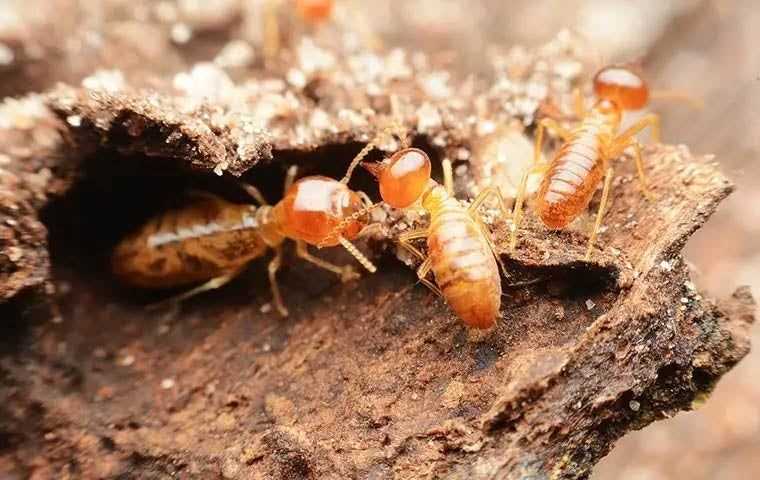
Termites are beneficial insects when they are out in nature traveling through the soil and feeding on rotted wood and other plant matter. They help to speed up the decaying process, which releases nutrients back into the ground. These termites are highly social insects as well, nesting underground in the damp, moist soil. Unlike carpenter ants, which termites are often confused with, subterranean termites do not nest in the wood they are feeding on. Traveling back and forth from their underground nests to their food source each day, worker termites bring food back to the colony to feed its members.
Unfortunately, termites don’t only live out in nature and away from people. They nest close to homes and other buildings where they find their way indoors through cracks in the foundation or through wooden structures around your home or business that make direct contact with the ground. Once inside, it is not at all uncommon for termites to work for months or even years inside of the structural wood without being noticed. Termites work day and night year-round and the damage they cause over time becomes extensive and costly to repair, especially because homeowners insurance typically doesn't cover the loss!
To prevent problems with termites in your home or business, consider the following prevention tips:
- Maintain a barrier of stone or crushed rock between your foundation and any mulch or grass.
- Use dehumidifiers, fix leaky pipes and remove water-damaged wood to reduce moisture.
- Eliminate entry points by sealing spaces in the foundation and exterior walls.
- Remove fallen trees, tree stumps, and excess piles of debris from your property.
- Limit soil-to-wood contact and remove excess moisture in and around your home or business.
- Make sure gutters and downspouts are working properly to direct water away from the foundation.
Bug Out Pest Control protects local homes and businesses from the most common pests in our area. To request your inspection or schedule your service, call Bug Out Pest Control today!

What Our Customers Are Saying
"A great company! They are honest and up front! Always on time and efficient! Highly recommend!!!"

Schedule Your Free Inspection
Complete the form below to schedule your no-obligation inspection



